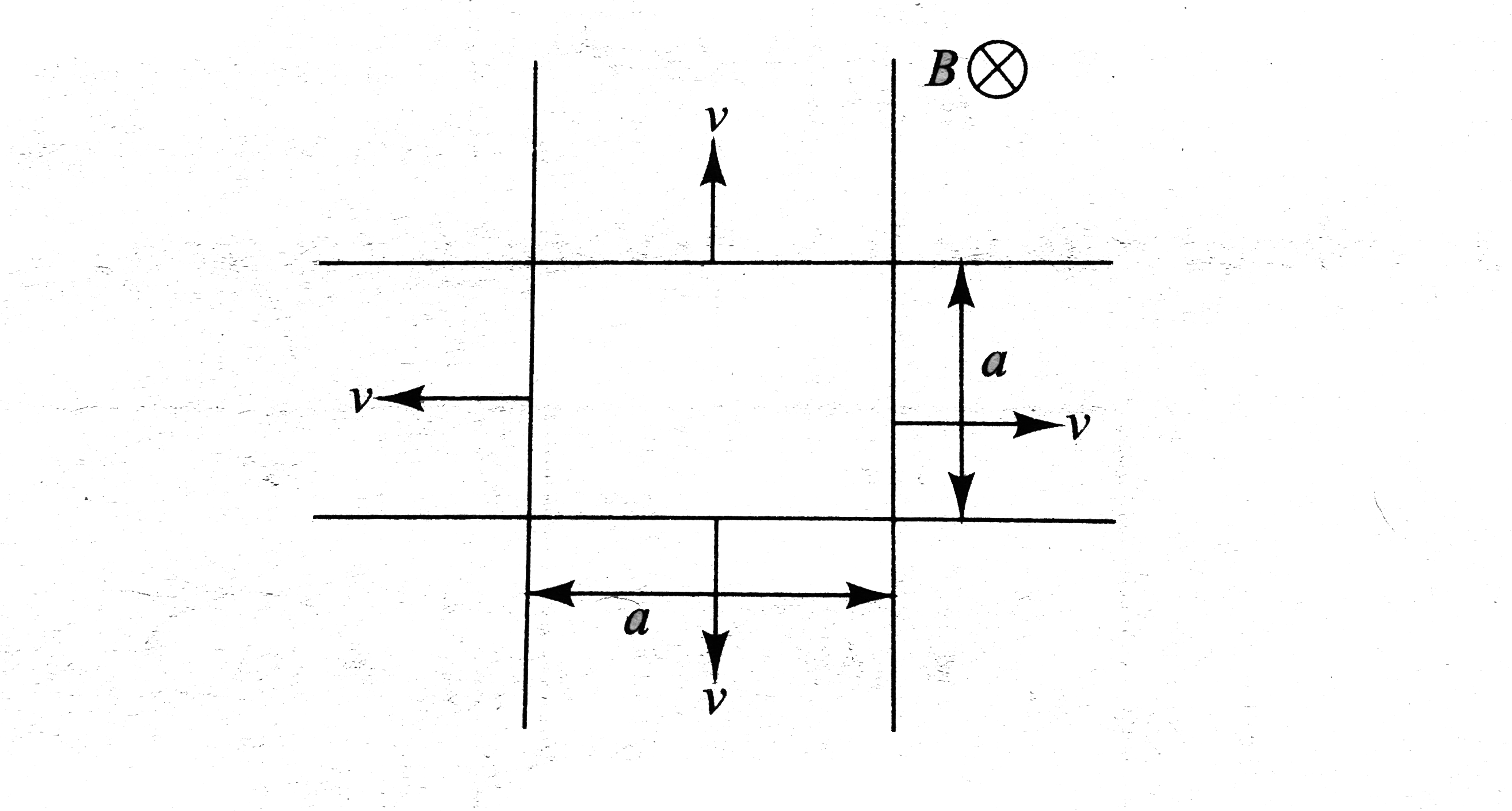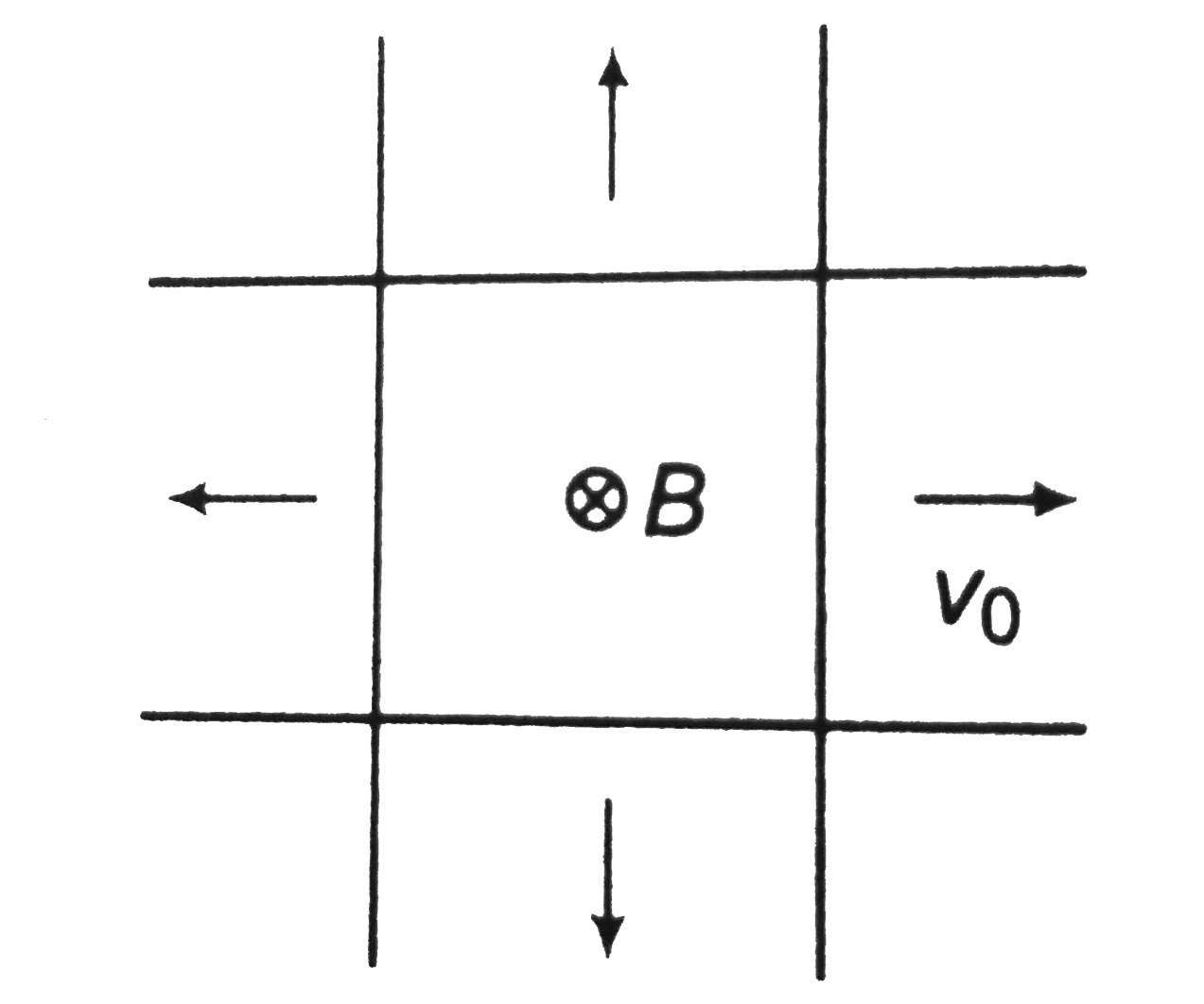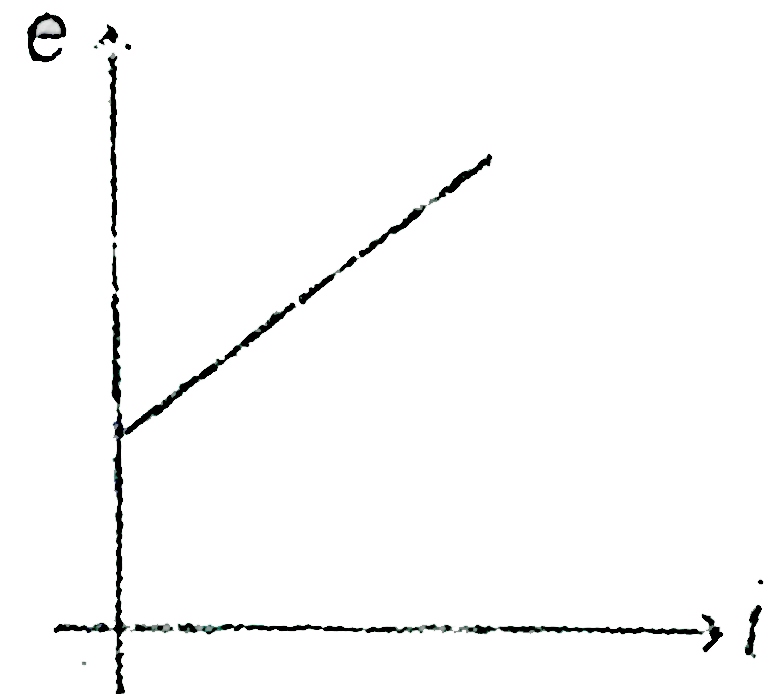Two parallel, long, straight conductor lie on a smooth plane surface. Two other parallel so as to form a square of side a initially. A uniform magnetic field B exists at right angles to the plane containing the cinductors. Now they start moving out with a constant velocity v.
(A) Will the induced emf be time dependent?
(b) Will the current be time dependent ?
The correct Answer is:(a) Yes; (b) No
(a) suppose the magnetic field is into the plane of the page.

after time t, the length of each side of the square is l=a+2vt
area of square,
l2=(a+2vt)2
=(a2+4v2t2+4avt)
ϕ=Bl2=Ba2+4Bv2t2+4bavt
|ε|=dϕdt=8Bv2t+4Bva=4Bv(2vt+a)
Hence, emf is time-dependent.
(b) The emf and resistance both are time dependent, but at any time t the resistance of loop is R=4μ(a+2vt), where μ is resistance per unit length of wire
→ i=4Bv(a+2vt)4μ(a+2vt)=Bvμconstant
Topper's Solved these Questions
- ELECTROMAGNETIC INDUCTIONBook:CENGAGE PHYSICSChapter:ELECTROMAGNETIC INDUCTIONExercise:Exercises Single Correct
Explore 79 Videos
- ELECTROMAGNETIC INDUCTIONBook:CENGAGE PHYSICSChapter:ELECTROMAGNETIC INDUCTIONExercise:Exercises Multiple Correct
Explore 23 Videos
- ELECTROMAGNETIC INDUCTIONBook:CENGAGE PHYSICSChapter:ELECTROMAGNETIC INDUCTIONExercise:Exercise 3.2
Explore 27 Videos
- ELECTROMAGENTIC INDUCTIONBook:CENGAGE PHYSICSChapter:ELECTROMAGENTIC INDUCTIONExercise:QUESTION BANK
Explore 40 Videos
- ELECTRON,PHONTS,PHOTOELECTRIC EFFECT & X-RAYSBook:CENGAGE PHYSICSChapter:ELECTRON,PHONTS,PHOTOELECTRIC EFFECT & X-RAYSExercise:dpp 3.3
Explore 15 Videos
Similar Questions
Two parallel, long, straight conductors lie on a smooth plane surface. Two other parallel conductors rest on them at right angles so as to form a square of side a initially. A uniform magnetic field B exists at right angles to the plane containing the conductors. Now they start moving out with a constant velocity (v).
Will the induced emf be time dependent?
View SolutionTwo parallel, long, straight conductors lie on a smooth plane surface. Two other parallel conductors rest on them at right angles so as to form a square of side a initially. A uniform magnetic field B exists at right angles to the plane containing the conductors. Now they start moving out with a constant velocity (v).
Will the current be time dependent?
View Solution
Knowledge Check
Two parallel long straight conductors lie on a smooth surface. Two other parallel conductors rest on them at right angless so as to form a square of side a initially. A uniform magnetic field B exists at right angles to the plane containing the conductors. They all start moving out with a constant velocity v. If r is the resistance per unit length of the wire the current in the circuit will be
ABvrBBrvCBvrDBvTwo parallel long straight conductors lie on a smooth plane surface. Two other parallel conductors rest on them at right angle so as to form a square of side a. A uniform magnetic field B exists at right angle to the plane containing the conductors. Now, conductors starts moving outward with a constant velocity v0 at t=0. Then, induced current in the loop at any time is (λ is resistance per unit length of the conductors)
 AaBv0λ(a+v0t)BaBv02λCBv0λDBv02λ
AaBv0λ(a+v0t)BaBv02λCBv0λDBv02λTwo parallel long straight conductors lie on a smooth horizontal surface. Two other parallel conductor rest on them at right angles so as from B exits vertical. A uniform magnetic field B exists a vertical direction. Now all the four conductors stock moving outwards with a constant velocity v. The induced emf e and induced current i will vary wide time t as
A B
B C
C D
D
A square loop of side d is moved with velocity vˆi in an non-uniform magnetic field B0axˆk then the emf induced shown is?

View SolutionA square frame with side a and a long straight wire carrying a current i are located in the same plane as m shown in figure. The fram translates to the right with a constant velocity v. Find the emf induced in the frame as a function of distance x.

View SolutionA square loop of side L, resistance R placed in a uniform magnetic field B acting normally to the plane of the loop. If we attempt to pull it out of the field with a constant velocity v, then the power needed is
View SolutionFigure shows a wire sliding on two parallel, conducting rails placed at a separation L . A magnetic field B exists in a direction perpendicular to the plane of the rails. What force is necessary to keep the wire moving at a constant velocity V ?

View SolutionA conducting square loop is placed in a magnetic field B with its plane perpendicular to the field. Now the sides of the loop start shrinking at a constant rate α. the induced emf in the loop at an instant when its side is a is
View Solution

